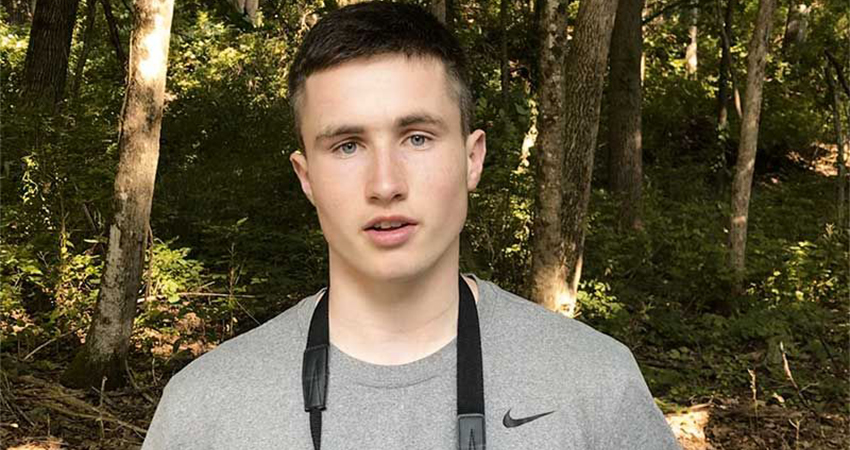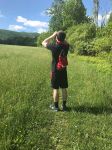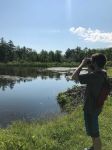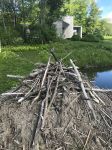This blog is a little different. I will be sharing my experiences of the same location but on two different days. It will also be another experience from Williamstown, Massachusetts. I hope you enjoy it. Please join me on Zoom for Birding for Beginners, on July 22 at 7pm.
The first time I visited The Trustees of the Reservations’ Field Farm was on May 31st. From the moment I arrived, I knew that it had a plethora of promise. It had many different kinds of habitats from woodlands, to fields, to marshes and wetlands.
My mom and I began walking through a shrubby pathway while getting a good look at several bird species. We started by hearing them before identifying them as Warbling Vireos, Chestnut-sided Warblers, and Cedar Waxwings. I was two minutes into the hike and already very happy with the start. It only got better from there.
We rounded the corner and came upon the first pond where I was able to catch a glimpse of my first ever Green Heron, also known as a life list bird. No matter how cool the heron was, it wasn’t the main reason I came to Field Farm. The main reason was a black, white, and yellow songbird that makes its home in grasslands after traveling 6,000 miles from South America. It is called the Bobolink and it’s declining in many places because of farming and people mowing their pastures.
At Field Farm, in its protected meadows, the Bobolinks have established a strong population and I was able to see about 20 of them rising up from the grass to release their rich and unpredictable song. In the end, I finished the first day with 27 species including a Ruby-throated Hummingbird and a Swamp Sparrow.
The next time I went was on July 4. This time I was only able to stay for about 45 minutes as opposed to the two hours I spent last time. That did not mean it was any less memorable. I had already been to the Clark Art Institute Campus Trails that day (as you can read in my previous blog) and was just looking to get a few more species in.
The walk started out slowly as I progressed down the same shrubby path while seeing Black-capped Chickadees, an American Redstart, and a Common Yellowthroat. However, the theme of the walk would soon change from common birds to more intriguing and rarer ones.
I began the search for Bobolinks yet again but could not find any flying in the field. As I walked back to the car I heard faint singing in the distance. I instantly recognized it as a Black-billed Cuckoo, one of two species of Cuckoo in New England. I was ecstatic but it didn’t end there.
We walked closer to the car before pausing to look at a bird high up in a dead tree. From a distance, I wrongly identified it as a Tufted Titmouse. Looking back, I don’t know how I thought that in the first place. I soon came to realize it was an American Kestrel, a small and colorful falcon, and my favorite bird of prey. I have been on the hunt for one all summer. What a way to end the day! I finished the second walk with 11 species in total but two of them made the little species count feel not so little anymore.




